Deciding where to travel in Spain is no easy task as the list of the best places to visit in Spain seems endless. It’s no overstatement to say that it would take a lifetime to see everything that Spain has to offer.
But that’s what we’re here for, to help narrow down a shortlist with our recommendations for the best places to visit in Spain for rich cultural heritage, good food, and incredible landscapes.
Jump to a section of this article
9 Best Places To Visit in Spain
1. Barcelona
Barcelona is the classic starting point for any Spanish odyssey. The capital of Catalonia is the best city to visit for a bit of everything Spain is famed for. Beguiling neighborhoods, superb food, magnificent architecture, and beautiful beaches.
Get the lay of the land with a wander down La Rambla. This pedestrian street bisects the labyrinthine Gothic Quarter with its churches and squares and the hip El Raval with its murals and contemporary galleries. This central area is the natural base for a stay in Barcelona as it’s close to sights and transport.
In the iconic district of Eixample, Antoni Gaudi’s obra maestra is slated for completion in 2026 after a 144-year-long construction process. An insightful guided tour can shed light on the significance of La Sagrada Familia before you continue to hear the stories behind Casa Batllo and Casa Mila, two more beautiful buildings of modernist architecture, born of the genius of Gaudi. Seeing Park Güell and Colonia Guell Church completes your mandatory Gaudi trail.
All that exploring makes for an appetite and Barcelona doesn’t fall short. The Boqueria Market is a cornucopia of seasonal produce and gourmet pantry staples. Tapas taverns serve Barcelonian potato Bombas alongside Iberian ham, regional cheeses, and nationwide favorites. Look for Esqueixada on a hot day – a Catalonian dish of salt cod, tomatoes, and onions, similar to ceviche.
There’s little need to venture beyond La Barceloneta for a beach session. If time allows, though, add an outing to the alluring Costa Brava to your summer itinerary, complete with sea kayaking and snorkeling.

A Side Trip To Tarragona
Alternatively, head to Tarragona, either on an easy day trip or as an extension to your trip across Catalonia. Founded as Tarraco in the 3rd century BC, Tarragona was the first settlement established by the Romans on the Iberian Peninsula.
Many of its ancient ruins are still standing, with the foundations of the Roman Forum claiming the heart of the contemporary town. Remnants of the city walls and towers can be seen near the historic Part Alta or Upper Town. The beautifully preserved Roman amphitheater and circus stand a stone’s throw from the main beach.
There’s plenty in Tarragona to satisfy beach enthusiasts, too. Playa El Miracle is the easiest option. Yet, we’d urge you to take your towel further up the coast to the prettier beaches of Savinosa and Llarga.
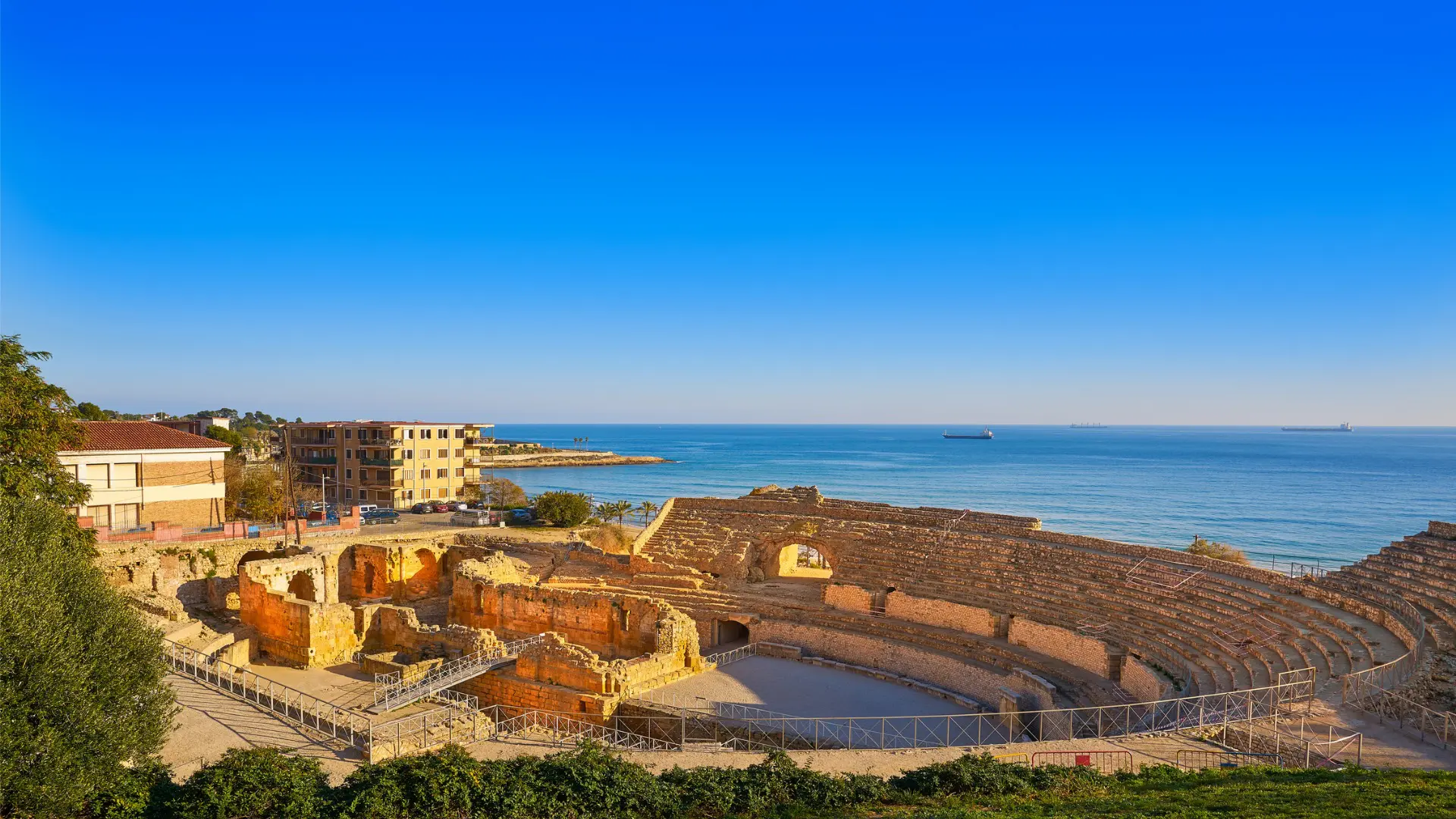
2. Madrid
Some are deterred by the inland position of the Spanish capital, but we consider it all part of the magic. The flowing River Manzanares, lush Retiro Park, and vast Casa de Campo compete with any beach. Furthermore, the largest city in Spain, Madrid is a bastion of the arts with regular festivals celebrating everything from jazz to flamenco.
Stroll down the Paseo del Prado where the Prado, Thyssen-Bornemisza, and Reina Sofia museums form Madrid’s celebrated Golden Triangle of Art. These galleries are a who’s who of Spanish and European artists with works from Velazquez, Titian, and Rembrandt to Dali.
Although it remains the official residence of Spanish royalty, the Royal Palace of Madrid is open to the public. The palace stands next to the Almudena Cathedral where noble Spaniards are laid to rest.
Madrid’s gastronomy orbits around La Latina’s lively tapas bars, Ibiza’s chic bistros, and fusion cuisine in Lavapies. Here’s an icebreaker for your food tour: why do Madrileños call themselves gatos (cats)? The origins are hazy, but asking yields all kinds of tales.
A day trip from the capital of Spain comes with the perk of getting lost in the jungle of plants and trees from five continents that lie hidden in the Atocha Station. Take a 30-minute train to Toledo to learn how the Christian, Jewish, and Islamic faiths co-existed in this Imperial City.
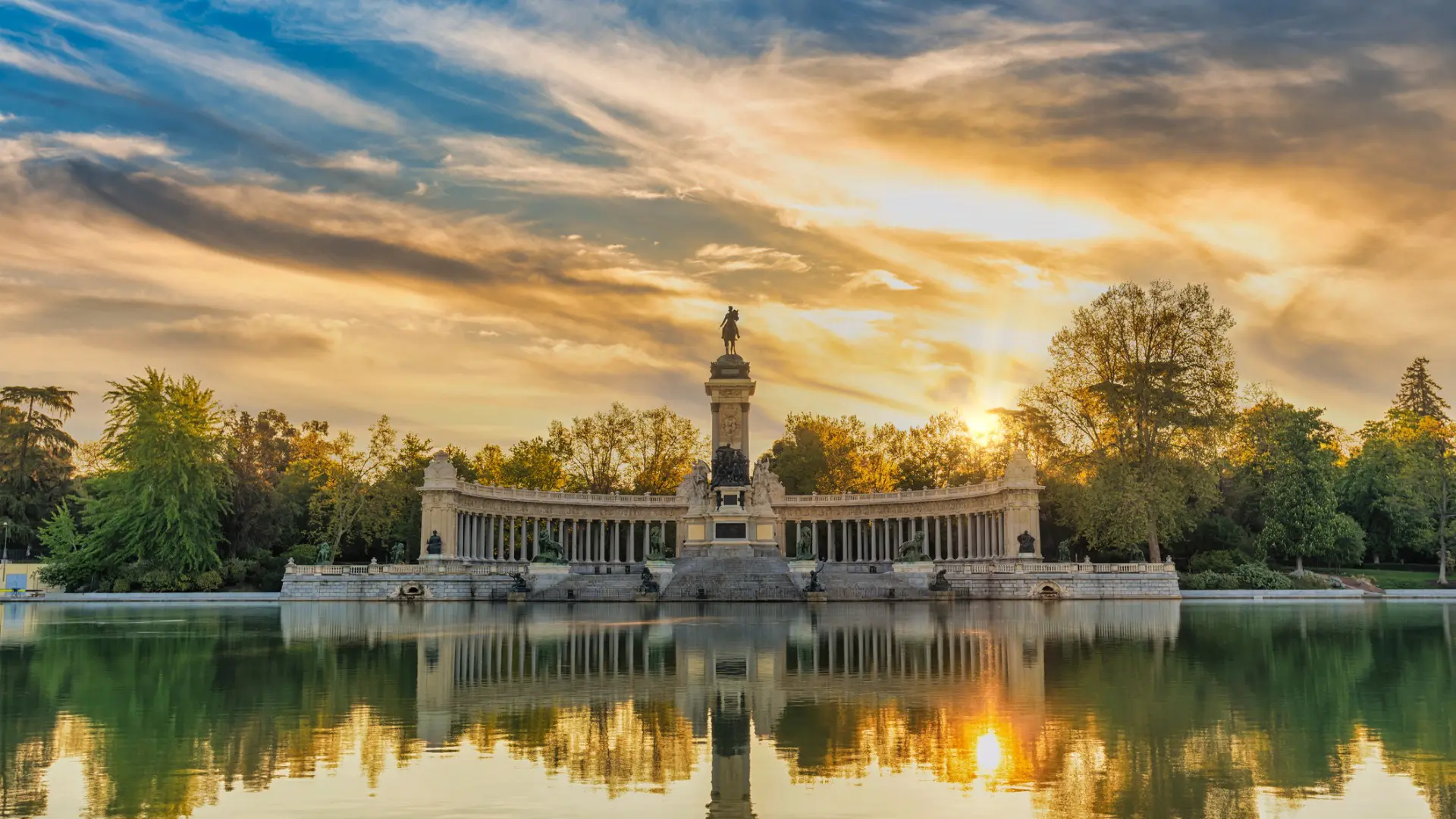
3. Seville
There’s beauty at every turn in Seville, the handsome capital of Andalusia. Pore over every tile at Plaza de España, marvel at the frescoes at Plaza del Cabildo, and take in the views from La Giralda, for starters.
Seville is one of the best places to visit in Spain for getting to grips with history. The Moors swept through the Iberian Peninsula from the 8th century onwards, laying down roots with fortified palaces and opulent mosques later repurposed after the Reconquista. The Royal Alcazar of Seville exemplifies Mudejar architecture and joins the Cathedral – the largest Gothic cathedral in the world – and the Archive of the Indies as Seville’s trio of UNESCO World Heritage Sites.
The mighty Guadalquivir River saw Seville play an integral role in Spain’s Golden Age. The country’s sole inland seaport remains in use, and river cruises reveal snippets about its legacy. As trade waned, Spanish flamenco was born in Seville. Performances of this passionate art form that blends dance, song, and music occur nightly at the Flamenco Dance Museum and various theaters around the center.
As with Barcelona and Madrid, Seville enjoys a prime location for day trips. Visit the Doñana National Park with crossed fingers to spot migratory birds, eagles, flamingoes, and, possibly, an Iberian lynx. On the other hand, history buffs shouldn’t miss an excursion to the Great Mosque-Cathedral of Cordoba – another unmissable Moorish site in southern Spain.
Seville’s Mediterranean climate brings sizzling summers and mild winters with sunny skies even on chillier days. There’s never a bad time to visit Andalusia.

4. San Sebastián
Everyone knows about tapas but few are familiar with the pintxos of northern Spain. Pintxos are served at bars in San Sebastian (Donostia in the Basque language) and the wider region. Usually held together by a toothpick, pintxos typically have a bread base garnished with meats, seafood, and vegetables. These are served with a Txikito – a small glass of Txakoli white wine or La Rioja red wine.
That said, San Sebastian brags a shockingly high number of Michelin stars. Therefore, you might want to save your hunger for the main event. Your JayWay contact is always available to provide personal recommendations and assist with reservations.
Besides being one of the best places to visit in Spain for gourmands, San Sebastian also boasts a charming Old Town. Parte Vieja fans out around the peninsula-like Mount Urgull where Belle Epoque buildings and stunning Bay of Biscay views vie for equal attention. That sweeping crescent, La Concha Beach, is one of The 12 Treasures of Spain.
In addition to swimming, cycling, and cruising the bay, you can experience the underwater world at San Sebastian’s aquarium. Kids – and adults – love walking through the 360-degree tunnel as tiger sharks and stingrays swoop overhead.
This glamorous coastal city is anything but sleepy after sundown. Duck into a sidreria (cider house) and sample the tangy apple beverages crafted in Astigarraga. There’s always somewhere to tap your feet in San Sebastian with the live music scene encompassing underground jazz clubs through to acoustic jam nights.
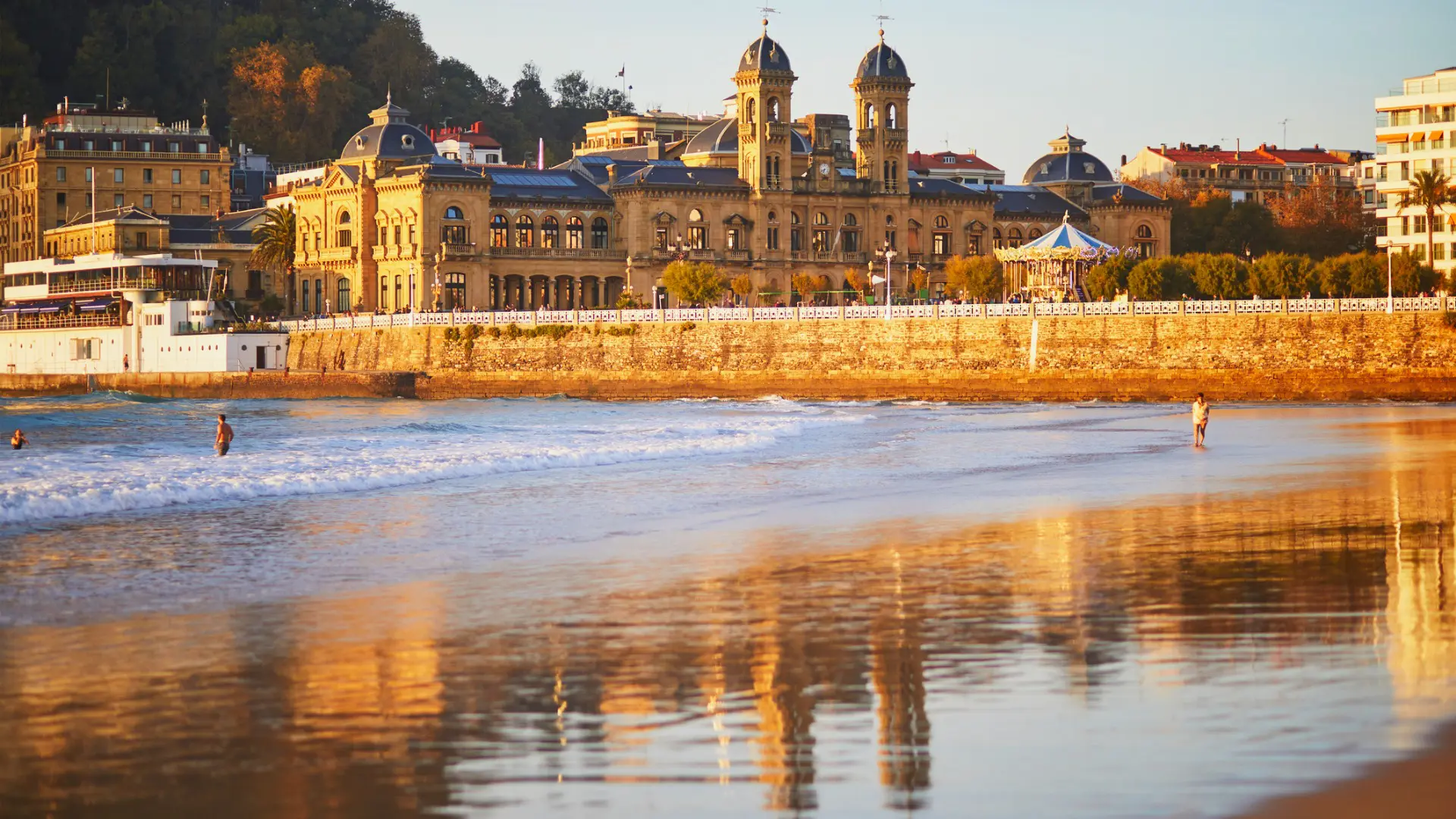
5. Granada
Granada perpetually ranks as the most beautiful place to visit in Spain, and rightly so. This glorious city at the foot of the soaring Sierra Nevada Mountains is the perfect marriage of architectural triumph and natural beauty.
Granada was the capital of the Moorish kingdom and harbors one of the country’s most significant World Heritage Sites. Adapted from the Arabic al-Hamra meaning red tinted, the Alhambra consists of the fortified Alcazaba, the ornate Nasrid Palaces, and the majestic Generalife Gardens with their porticos and fountains.
Experiencing golden hour at the Mirador de San Nicolas in the Albaicin is reason alone to spend a night in Granada. As the light softens, the complex shifts from vermilion to terracotta and rose pink. Rest assured, there’s plenty more to see before the sun drops.
Scrunch up your map and get joyfully lost meandering Albaicin’s cobblestone streets and hilly nooks. After your uphill strolls, a refreshing tonic of sweet mint tea is readily available at the Teterias, the tea houses that were left behind as a symbol of the Moors, or a pampering session at Granada’s functioning hammam to soothe sore muscles.
Sacromonte is the Roma quarter where homes are chiseled into the caves of the Sierra Nevada. The barrio springs to life in the evening when Granaina, a slower variation of flamenco unique to Granada, ripples through the narrow streets.
The young Federico Garcia Lorca relocated to Granada with his family and went on to pen his poetry and plays in what is now the museum Huerta de San Vicente. If there’s a city in Spain that’ll kindle the creativity, it’s definitely Granada.
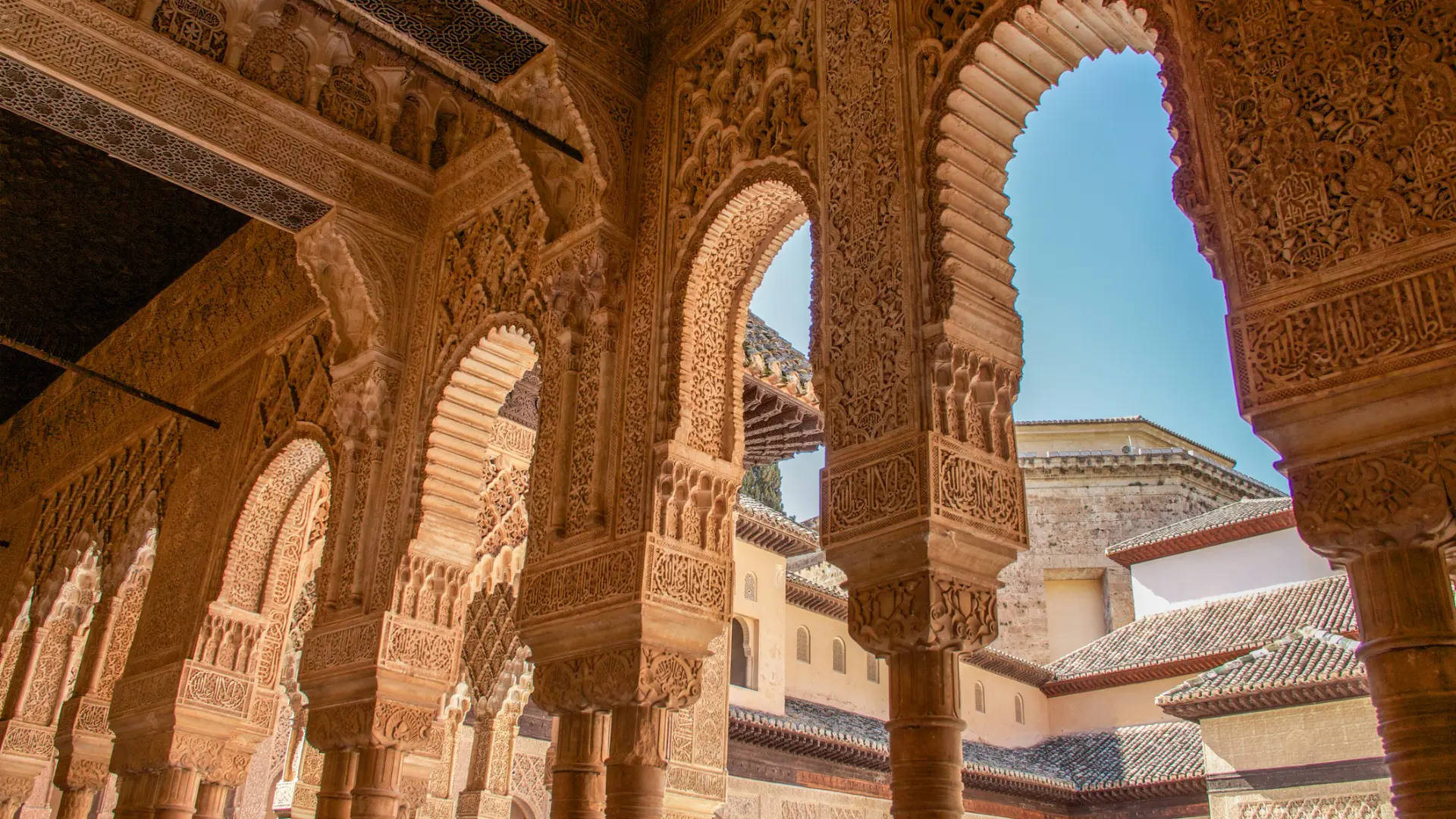
6. Ronda
Ronda is one of the most dramatic places to visit in Spain. This white-washed town is perched atop a 100-meter-high ravine at the meeting point of the Sierra de Grazalema Natural Park and Sierra de Las Nieves National Park.
It’s divided into two districts: the old Moorish medina and a younger settlement north of the Guadalevin River. These settlements on either side of the El Tajo Gorge are linked by the Puente Viejo, Puente Nuevo, and Puente Romano bridges.
Ronda is one of Andalusia’s pueblos blancos – white villages – scattered across the provinces of Cadiz and Malaga. In their heyday, these white towns would have been excellent vantage points to monitor threats. These days, all you need to worry about is where your next bowl of gazpacho is coming from as you drink up the views under the Andalusian sun.
As the largest and most easily accessible of all pueblos blancos, Ronda is ideal for an overnight stay. It has the most tourist attractions, including the 13th-century Arab Baths that display a system comparable to those of Ancient Rome.
Twenty minutes north of Ronda, the homes and restaurants of Setenil de las Bodegas are carved right into the rocks of the gorge. Moreover, Olvera strikes an extraordinary scene with its neoclassical church and Moorish castle rising above the small village. If you don’t know where to start, rest assured that JayWay will tailor the perfect Andalusia itinerary for you.
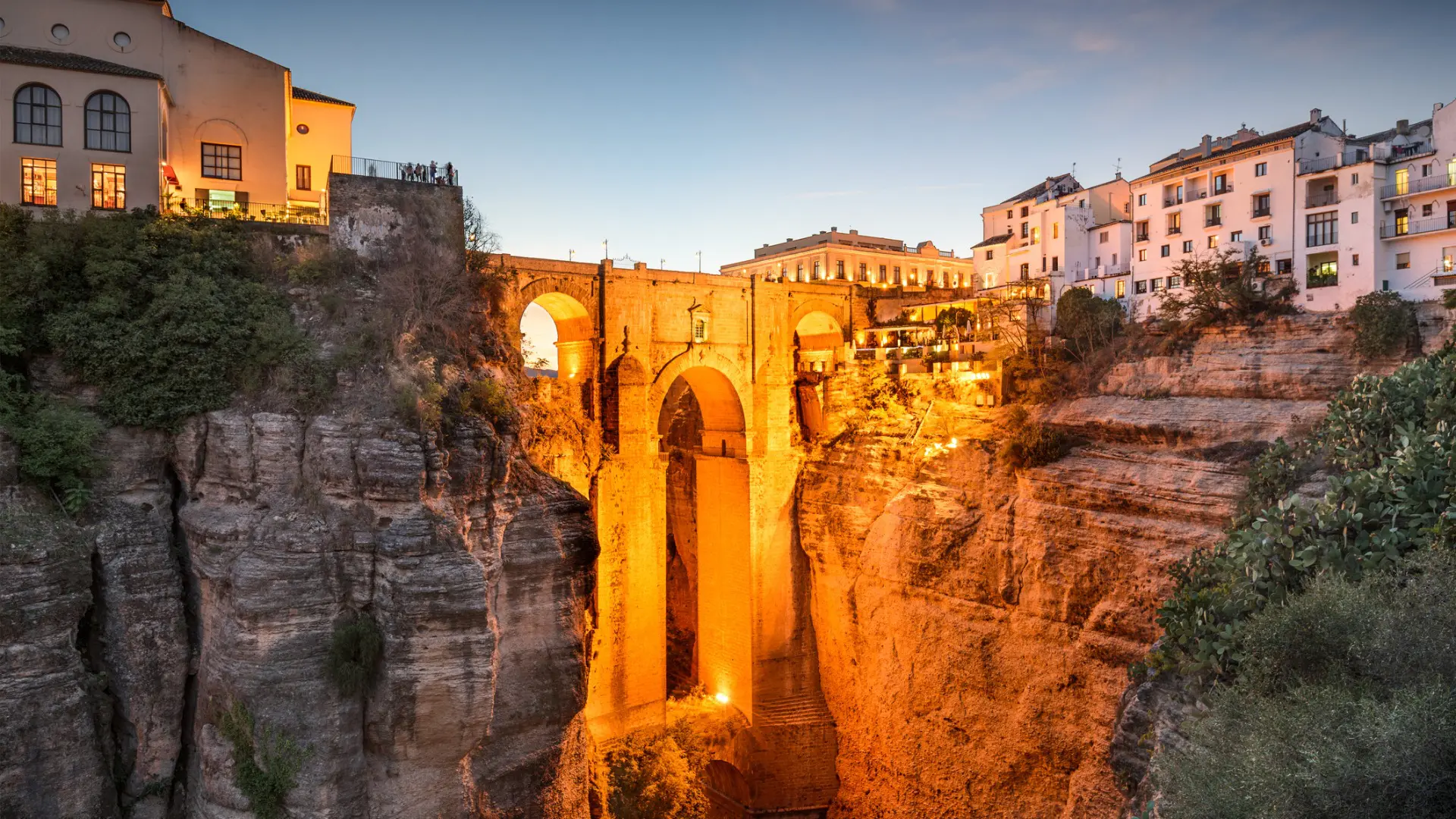
7. Bilbao
The opening of the Guggenheim Museum put Bilbao on the map as a tourist destination as recently as 1997. Frank Gehry conceived the art museum’s head-turning design, best appreciated from the north bank of the Nervion River in the city center. From some angles, the swirling structure resembles a boat which may be in honor of the city’s origins.
Before the Guggenheim shook things up, Bilbao existed as a port city. Its former shipyard is now a tribute to the region’s maritime and shipbuilding prowess through vessels and nautical relics exhibited at the Itsasmuseum.
Bilbao is full of quirky little spots such as the Arcos de la Ribera – a series of porticos with hidden frescoes depicting the city’s rich history. The nearby market happens to be the largest indoor marketplace in Europe with a dizzying assortment of stalls, restaurants, and bars.
As part of the Basque Country, Bilbao is often visited in conjunction with San Sebastian. The two cities couldn’t be more different but you’ll be relieved to hear both are swimming in pintxo taverns and wine tours.
Spain’s foremost wine region, Rioja, is only an hour’s drive from Bilbao. The region is divided into Rioja Alavesa, Rioja Alta, and Rioja Baja with the former two producing the most superior reds using Tempranillo grapes. Fall’s grape harvest could be the best time to visit Bilbao for wine lovers. Yet, it’s never difficult to source a top-notch glass of wine.
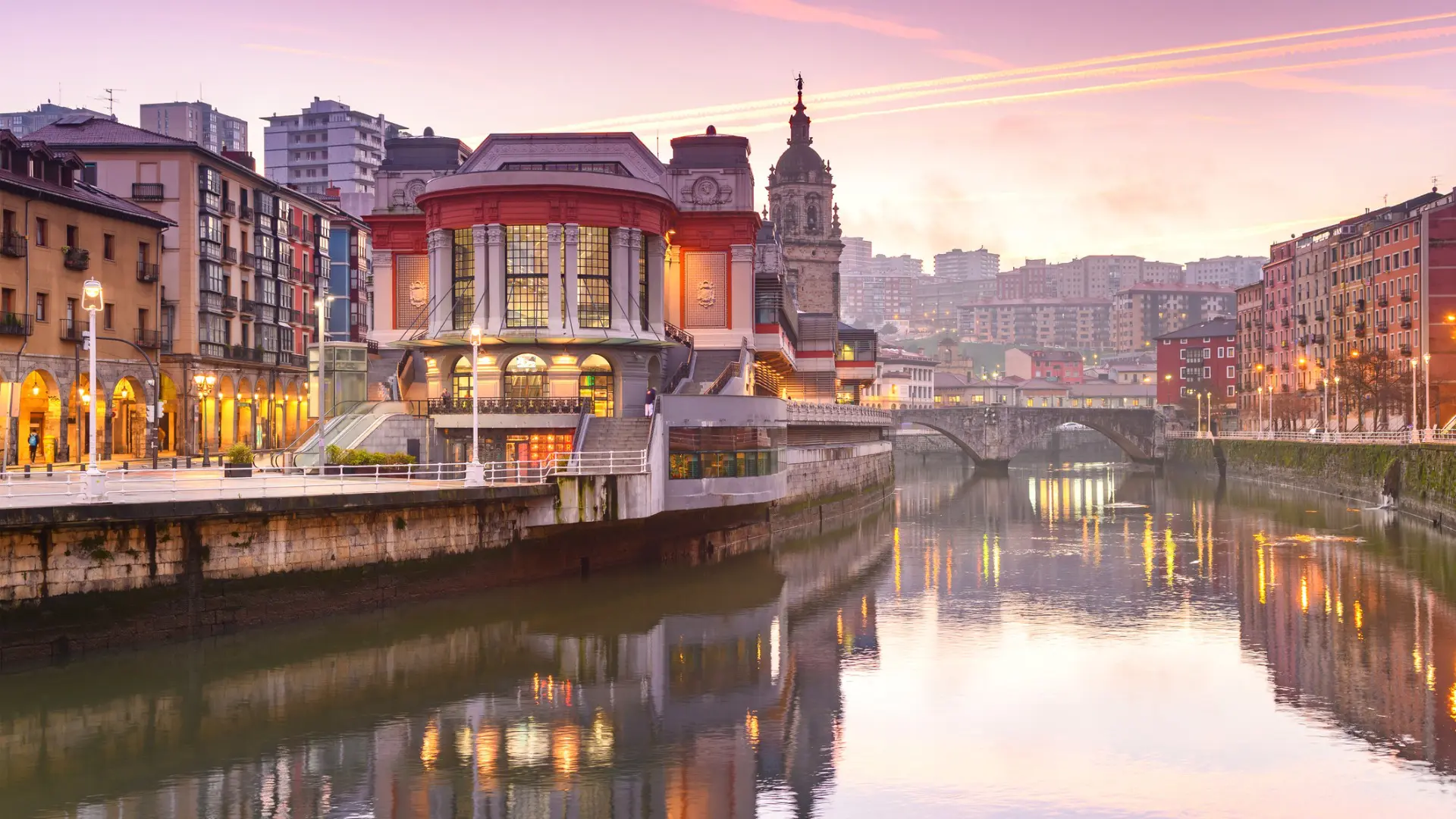
8. Malaga
If Barcelona captured your heart, there’s a ninety-nine percent chance you’ll fall for Malaga, too. Both cities have a Mediterranean coastline, a vibrant port area, artsy enclaves, and effervescent nightlife. Mind you, the similarities end there. Barcelona is the soul of Catalonia, whereas Malaga is the gateway to Andalusia’s Costa del Sol.
Layered atop Roman foundations and predating the Alhambra, Malaga’s Alcazaba looms over the Centro Historico. The addition of Gibralfaro Castle over a Phoenician stronghold solidified the city and led to a four-month siege during the Reconquista.
The city has seen its fair share of ups and downs since 1487, as illustrated at the Malaga Museum. The gorgeous Renaissance Cathedral is known as La Manquita, the One-Armed Lady, as work was eventually signed off without its south tower. One hundred years later, the most famous Malagueño was born. Learn about the artist who set Cubism in motion at the Picasso Birthplace Museum and see his prized pieces at the Picasso Museum.
Art also spills into the streets in Soho, Malaga’s harborside barrio where murals fill the gaps between art galleries and boutiques.
Malaga’s closest beaches are walkable from the historic center. Look out for the Chiringuitos, beach shacks serving thirst-quenching cocktails, and tasty Espetos – grilled sardine skewers.
Malaga is often visited in tandem with its glamorous western neighbor, Marbella. This luxurious seaside resort has a charming Old Town comprising white-washed buildings and plazas canopied with orange trees. It’s a fashionable destination with beach clubs to rival those of Ibiza and world-class golf courses.
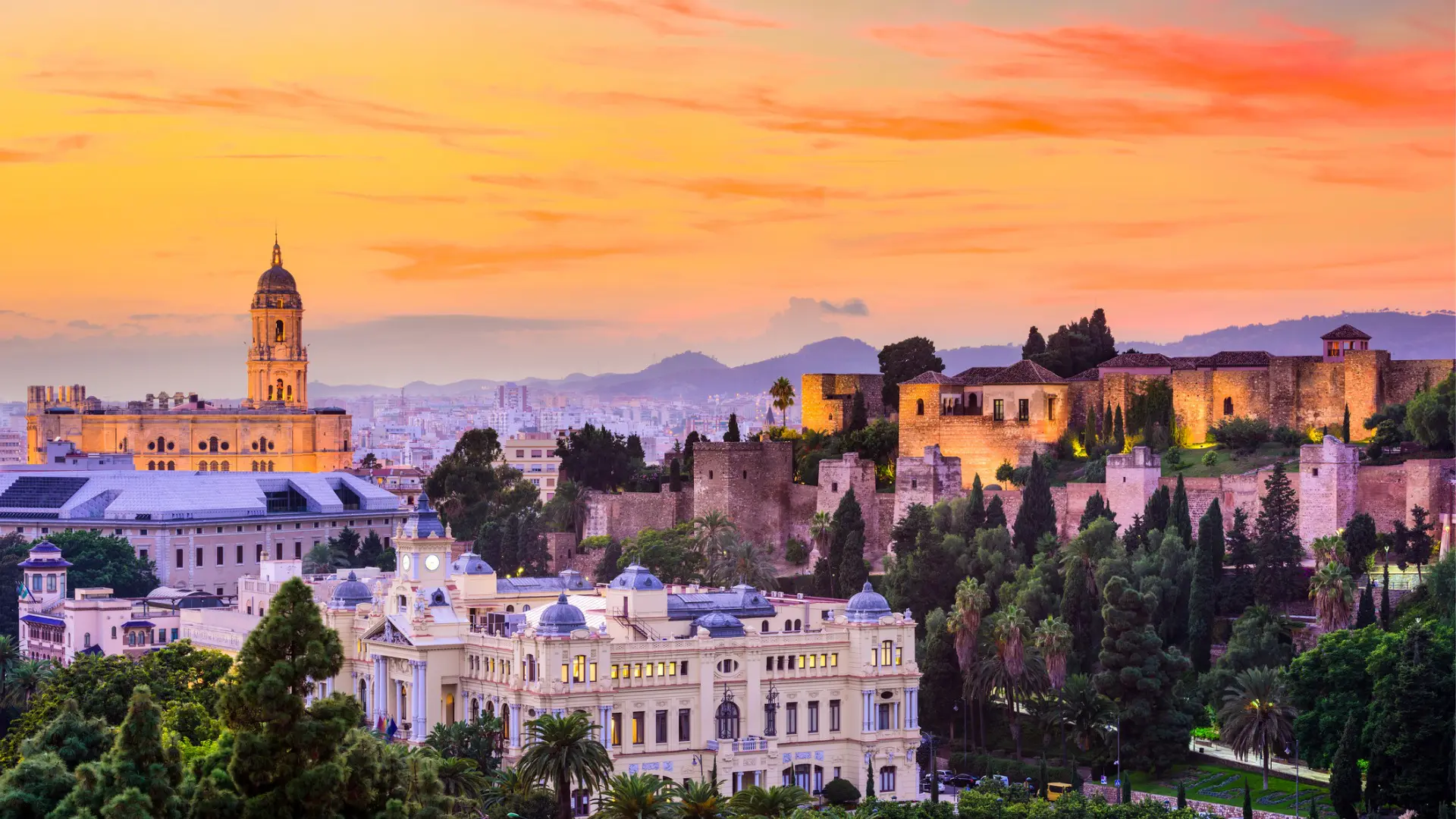
A Side Trip To Nerja
A short car or train ride away, Nerja is another of the white towns of Andalusia and can be the ideal day trip from Malaga. It’s also the perfect place to detox for a couple of nights on a southern Spain itinerary.
Once a sleepy fishing village, Nerja has found a new lease of life as a laid-back seaside resort with white-washed buildings atop cliffs, aquamarine waters glistening in secret coves, and the famous Balcony of Europe.
Nerja is one of the best places to visit in Spain for a traditional atmosphere. It’s a favorite among families and couples seeking tranquility and sunny days. The town is relatively flat with strategic pedestrian paths to make getting around a doddle.
On the outskirts of the town, the Nerja Caves complex features stalactites, stalagmites, and rock paintings that tell us the grotto was inhabited 40,000 years ago. A second cavity is used for concerts.
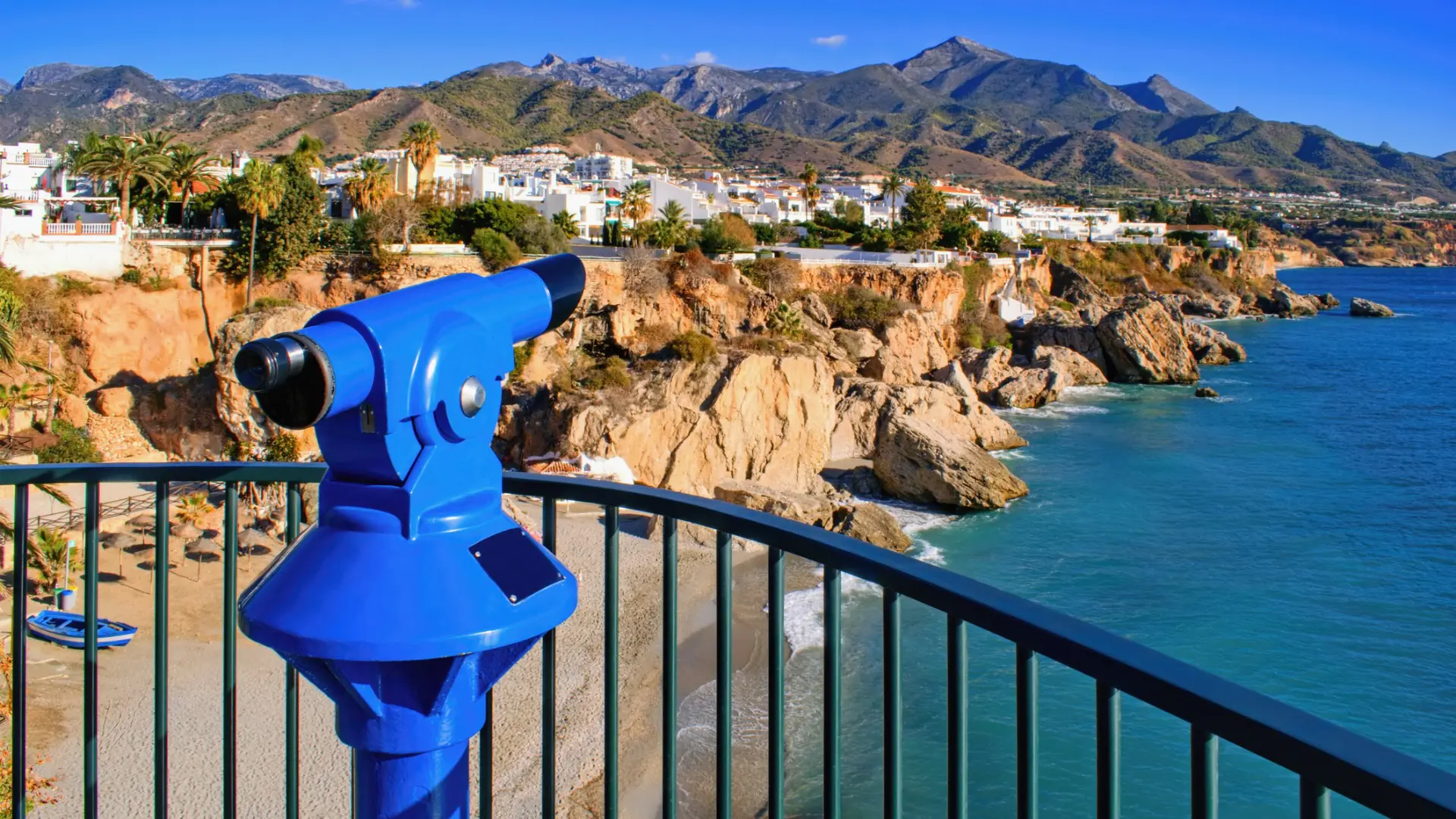
9. Valencia
Valencia bridges the gap between north and south, old and new. It’s one of the most fascinating places to visit in Spain to learn about the past and get a sneak peek of the future.
But first, paella. The emblematic Spanish dish was born in the Valencian Community, at the hands of farmers. Agricultural workers would toss bomba rice and whatever vegetables and legumes were at hand into a flat-bottomed pan called a Paellera. Any protein would come from foraged chicken, rabbit, or snail meat.
This laborers’ lunch was a hit and became the cornerstone of family dining in Valencia. Nowadays, paella is available throughout the region, prepared with saffron and seafood. Enrolling in a paella cooking class in the very birthplace of paella is a no-brainer. There’s no better memento for your summer in Spain.
Walk off the paella with a stroll around the City of Arts & Sciences. The avant-garde complex designed by the Spanish-Swiss architect Santiago Calatrava features an aquarium, science museum, concert halls, IMAX movie theater, and boating pools.
History nuts will gravitate toward the Ciutat Vella, now a UNESCO World Heritage Site where Romans, Visigoths, and Moors have left their mark. La Lonja de La Seda preserves Valencia’s prosperous silk trade, while the Cathedral contains a chalice that’s thought to be the Holy Grail.
Turia Park appeals to all. A sweep of green built on a former riverbed, the park is popular with cyclists, runners, and sunseekers. Valencia’s closest beaches are a short tram or taxi ride from the Ciutat Vella. Farther south, you’ll enter Costa Blanca, Spain’s famed White Coast.
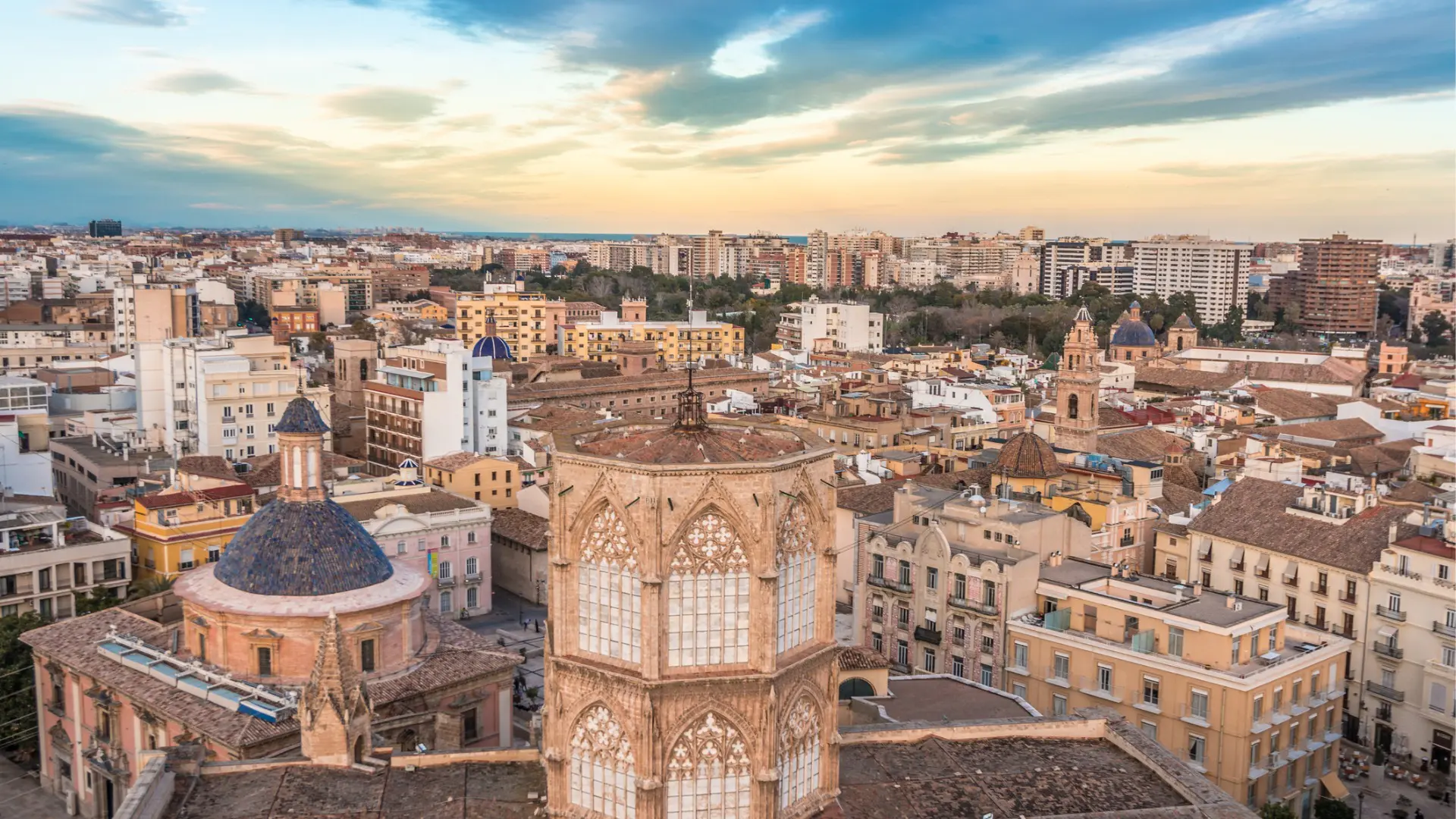
See Spain With Us
Spain is an insanely diverse country that has something for everyone. The only drawback is that planning a trip to Spain can be a bit overwhelming. But, if you’re here, it means you’re ready to leave it to the experts to plan the perfect Spain trip for you. All you have to do is dream of the best places to visit in Spain and our trip planners will put together a bespoke Spain itinerary just for you. At JayWay Travel, we know Spain quite well and our local staff in Spain can’t wait to welcome you to their beloved country.

Born and raised in Athens, Maria’s passionate about travel and storytelling, a combination that makes her ideal for her role as our content manager.
DO YOU HAVE A GROUP TOUR IN SPAIN AVAILABLE FROM JULY FOR 2 WEEKS. WE ARE 3 PEOPLE. OPEN WITH THE DATES IN JULY 2024.
Hi Yuraima, we don’t go multi-day group tours – we’re a custom tour company – but we can include small group day trips, walking tours, and cooking classes in a custom itinerary for you.